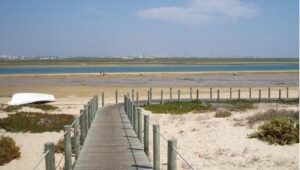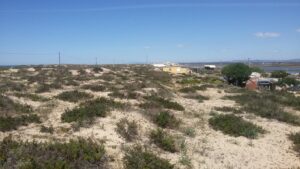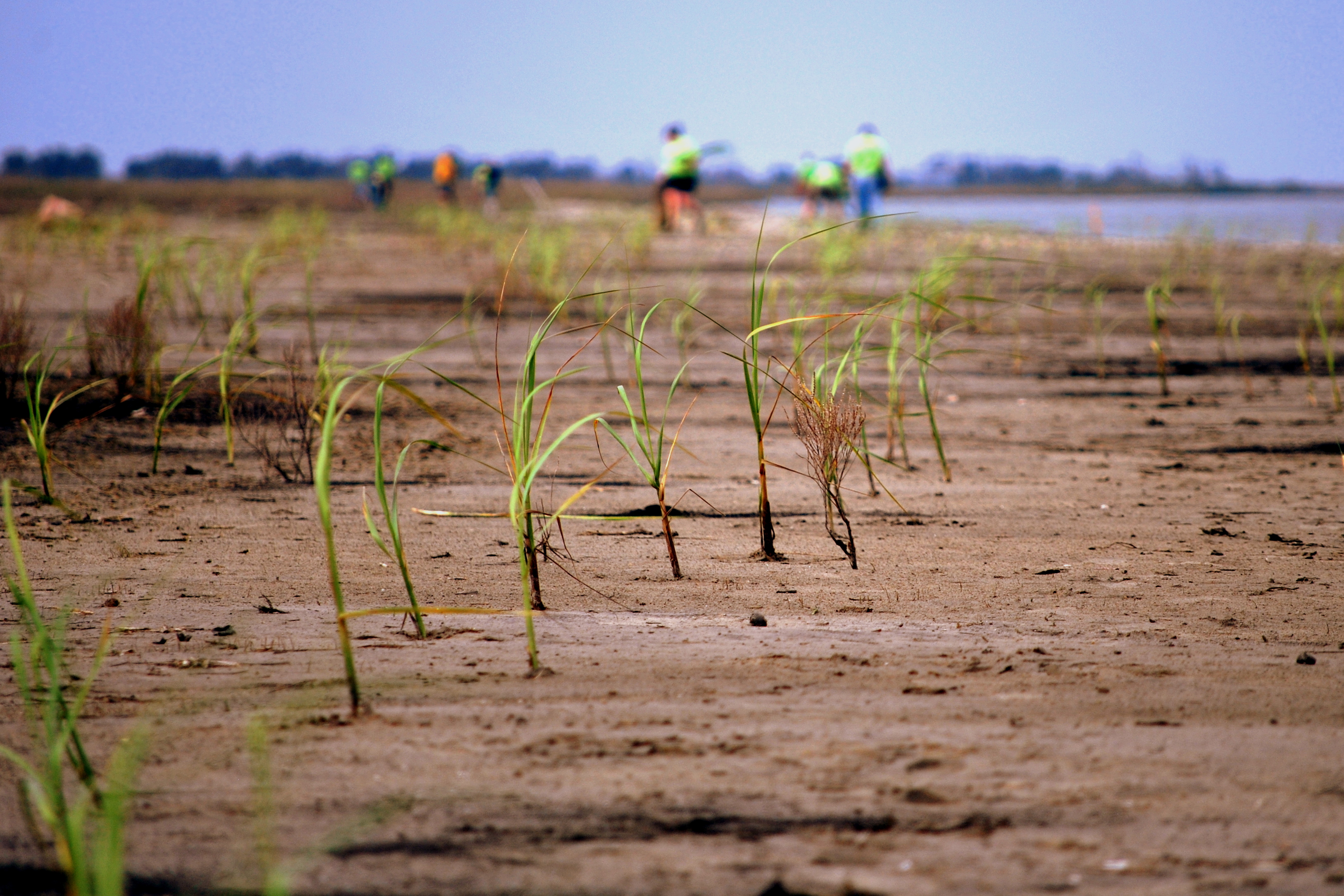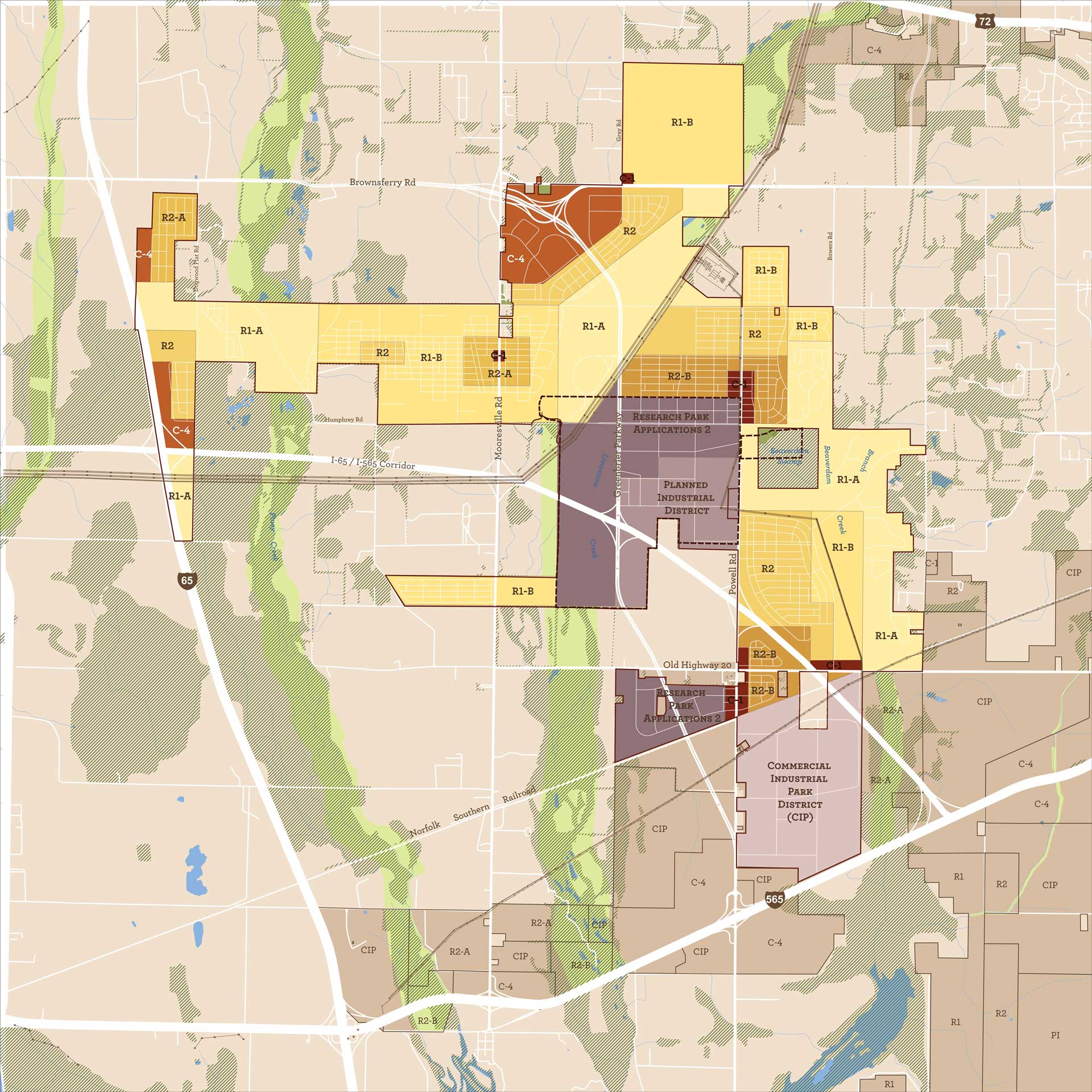Dune Rehabilitation in Praia do Faro, Faro, Portugal
Challenge: Praia do Faro is a popular tourist summer destination on the South coast of Portugal. The area is an ecologically fragile peninsula that requires significant and ongoing flood protection. The dunes at Praia do Faro currently play a major role in coastal protection; however, past irresponsible tourism and recreation resulted in a steady degradation of these dunes which elevated the concern amongst residents regarding coastal safety.
Project Details
- Location: Faro, Portugal
- Population: 67,566 (in 2021)
- Strategies: Restoration of sand dunes
- Cost: € 1,250,000
- Benefits: Reduce flooding, Biodiversity enhancement, Reduce erosion, Recreation
Overview/History: The dunes protecting Praia do Faro were degraded by housing and tourism activities that led to the establishment of unauthorized pathways and use of the dune system. This use has resulted in degradation of the dune system and loss of various ecological functions, including deteriorated coastal protection. Due to the location of the dunes within the Ria Formosa Natural Park, their long-term preservation and immediate rehabilitation to enhance ecological functions such as flood reduction was a management imperative for the Natural Park Service. Thus, the rehabilitation of the dunes was proposed as a nature-based approach to manage flood risk.
Solution: The main goal of the project was to restore the dune system at Praia de Faro in Portugal. In 2000/2001, an elevated wooden pathway with dune fencing was constructed both along-shore and cross-shore within the Park’s dune system project area. The total length of the pathway was ≈ 1.5 km. Part of associated dune fencing was built as a reticulate throughout 670 m of shoreline, which enhanced the entrapment of sand, for the expansion of the dunes system.
The project faced some resistance from the house owners, for most of whom these were ‘second homes’ and built illegally. Nevertheless, the general community valued and supported the project, even though they were mostly interested in the benefits of the elevated pathway construction rather than to the restoration of the dunes. This indicates on the one hand the multiple co-benefits an NbS project can bring, but on the other hand a potential to improve ways to disseminate important information about the coastal protection features provided by dune systems and other coastal ecosystems.
After more than 15 years of focused foot traffic by visitors on the elevated wooden pathways and associated dune fencing, the dune system grew 10 m in width and around 1.3 m in height. The dune system rehabilitation delivered a very successful combination of natural coastal protection, enhanced well-being for the community due to flood reduction, and responsible recreational opportunities within the Natural Park. The project illustrated the positive impacts of dune rehabilitation by employing elevated pathways to increase ease of access and enjoyment for the community, while also promoting ecosystem recovery. The area became safer after the site restoration, attracting more tourists, surfers and enhancing the well-being of residents which received better access to their properties. This example indicates, on the one hand, the multiple co-benefits of NbS, but on the other hand, a potential to improve ways to disseminate important information about the coastal protection features provided by dune systems and other coastal ecosystems.
Funding/Financing: The project cost was about 1,250,000€, mostly through EU funding, and approximately 20% of funds were provided by the Portuguese government.
Benefits: Flood reduction and biodiversity rehabilitation were the main benefits arising from the various components of the project. Additional benefits included recreation and reduction of beach erosion. Based on the feedback from the local community and tourists, there was a general perception after the project implementation of increased well-being due to the renaturalization of the dune systems within the Natural Park.

Praia do Faro after the implementation of the elevated wooden pathway. Source: https://www.coastal-management.eu/measure/example-cost-effectiveness-analysis-wooden-path-over-dune-praia-de-faro-pt

Praia do Faro after the implementation of the elevated wooden pathway. Source: https://www.coastal-management.eu/measure/example-dune-rehabilitation-praia-de-faro-pt
References:
Risc-kit Example: Dune Rehabilitation in Praia do Faro (PT). Sources: https://www.coastal-management.eu/measure/example-dune-rehabilitation-praia-de-faro-pt
Example: Cost-Effectiveness Analysis of a Wooden Path Over The Dune (Praia do Faro, PT). Source: https://www.coastal-management.eu/measure/example-cost-effectiveness-analysis-wooden-path-over-dune-praia-de-faro-pt
Algarve – Censos 2021 (resultados preliminares). Source: https://www.ccdr-alg.pt/site/info/algarve-censos-2021-resultados-preliminares


